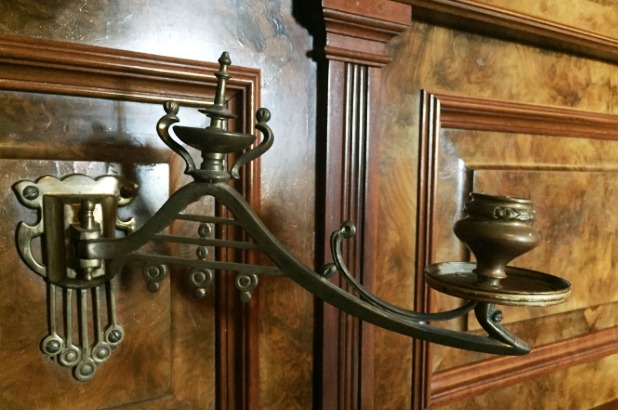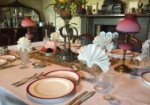Connections to food turn up in the most unexpected places – but you’d usually hope it wasn’t in a piano! Out at Rouse Hill we’ve had the conservators in over the past few days, dealing with that perpetual curse of the house museum: mold! A combination of hot and wet weather, and still air, can be heaven to mold spores. Getting in early to deal with a small bloom can prevent a lot of work and heartache later.
While working on the front panel of the piano from the drawing room we all had a good chuckle at a very practical, home made edition to the piano sconces, the swinging arms that held candles above the keyboard and music.
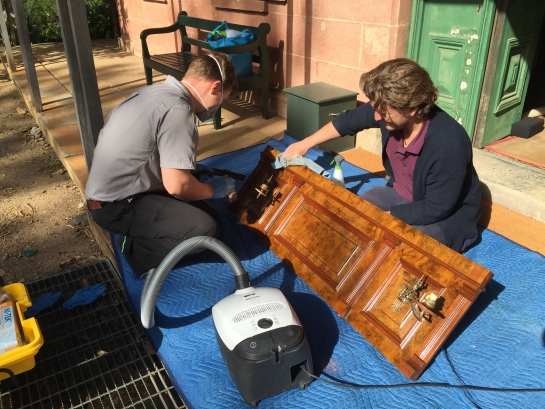
Conservators at work on the piano front at Rouse Hill House. Photo (c) Scott Hill for Sydney Living Museums
At Rouse Hill the drawing room with its furniture, soft furnishings, artworks and ephemera is an amazing survivor. A late 19th century photograph shows that around 3/4 of its content’s either haven’t moved in over a century, or have moved to a different location in the same room. In this photo you can see the room set as though for tea, using a teaset and other collection items from the house:
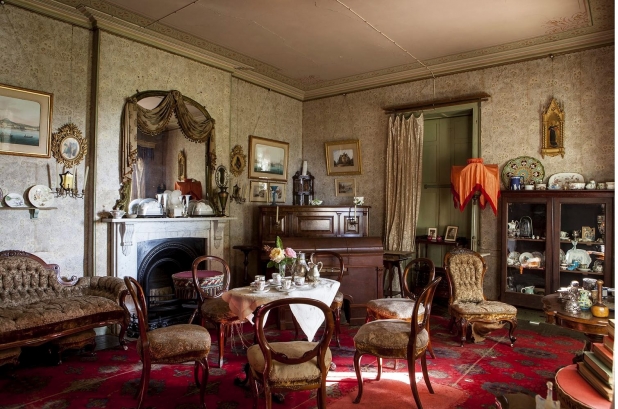
The drawing room at Rouse Hill House. Photograph (c) James Horan for Sydney Living Museums
In the far corner is a birds-eye walnut veneer upright piano, an 1874 wedding gift to Edwin Stephen Rouse (1849-1931) and his wife Bessie Buchanan from his sister Phoebe Dangar (nee Rouse, 1847-1931). Musical entertainment was a feature of life at Rouse Hill: Gerald Terry (the last permanent resident of Rouse Hill House) never recalled hearing his grandmother Bessie play, although both his mother Nina and aunt Katherine played. In turn his own son John is a keen musician; a photograph currently in the dining room shows him receiving his doctorate in music. The piano is marked on the underside of lid in gold transfer lettering the name of the German manufacturer Feurich of Leipzig, Germany, and above the keys is printed in gold transfer lettering the retailer “Nicholson & Co. Ltd.”
Drips on the keyboard
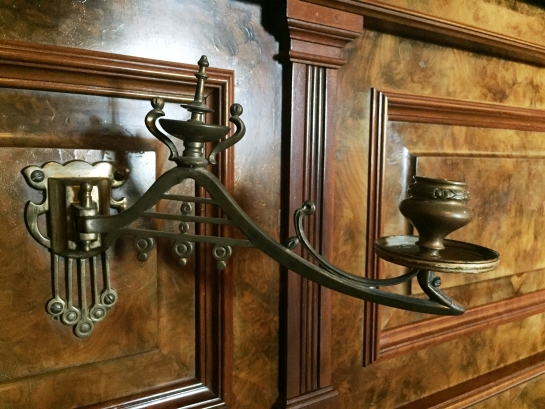
Candle sconce incorporating a jam jar lid at Rouse Hill House. Photo (c) Scott Hill for Sydney Living Museums
While the sconces held candles for light they were useless for preventing drips in a breeze – a broad drip tray presumably shadowing the keyboard disagreeably. Someone had the bright idea to unscrew the cups, adding a brass jam jar lid with a ribbed edge to one having first scraped off the white enamel around the edge to reveal the shiny material. I’ve chatted about the range of jam jars at Rouse Hill in a previous post.
This addition is so convincing that you’d never realise it wasn’t part of the original mechanism until you noticed one is slightly smaller than the other, and the metal colour of each is slightly.
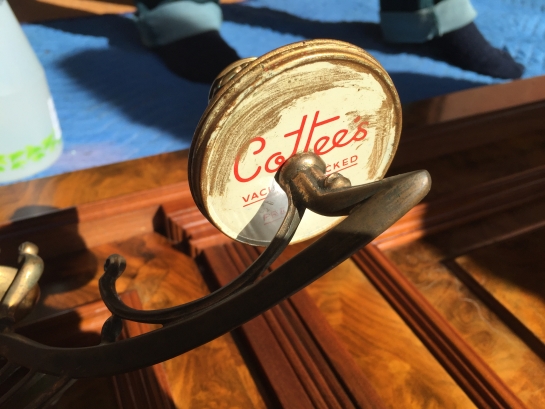
Jam lid used as a candle drip tray. Photo (c) Scott Hill for Sydney Living Museums
Like bits of wire used to repair fences, this bit of home ingenuity sits in the rich tradition of do-it-yourself and improvisation that is such a feature of rural life.
Interested in music?
Sydney Living Museums has a considerable music collection. You can dive into the story of music at our properties, and our ongoing research projects, here!
